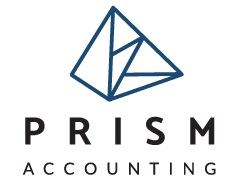From 1 July 2022, several key tax and super changes that are likely to impact your medical practice will come into effect.
Super Guarantee rate increase to 10.5%
From 1 July 2022, Super Guarantee rate will increase from 10% to 10.5%.
The rate will continue to increase by 0.5% each year until it reaches 12% in 2025.
The rate of super guarantee is determined based on the date when you pay your employees, not when the income is earned. For example, if you pay employees in your medical practice on Friday 1 July 2022 for the week starting Monday 27 June 2022, you will have to calculate super guarantee at 10.5%.
Super guarantee is calculated on Ordinary Time Earnings (OTE) of each employee or eligible contractor. If the total amount of employee’s OTE for a quarter exceeds the Maximum Contribution Base, you do not have to pay super guarantee on the amount of excess for that employee. The maximum contribution base for 2022 – 2023 Financial Year is $60,220 per quarter.
Removal of $450 minimum wage threshold for Super Guarantee
From 1 July 2022, the $450 minimum monthly wage threshold for super guarantee purposes will be removed. All employees aged 18 and over will be eligible for super guarantee contribution, regardless how much they earn.
If you have employees under 18 in your medical practice, you will need to pay super for them if they work for you more than 30 hours in a week.
Minimum Wages increases
Following a review, the Fair Work Commission has ruled that from 1 July 2022:
- the National Minimum Wage will increase by $40 per week, and
- award minimum wages will increase by 4.6%, which is subject to a minimum increase for award classifications of $40 per week and based on a 38-hour week for a full-time employee.
The updated awards are expected to be available from Fair Work Ombudsman website from 1 July 2022.
To ensure your medical practice complies with minimum wage requirements, you may need to update your payroll settings in your accounting software (unless you are relying on services of third party providers that make those changes apply automatically).
The base rate of GP registrars employed under NTCER will also increase increase for all training terms commencing after 1 July 2022 (the dates of term commencement are different for each training organisation).
Payroll Tax rates changes (NSW)
In NSW, the temporary rate reduction of Payroll Tax due to the COVID19 Pandemic will come to an end. From 1 July 2022 the payroll tax rate will revert to 5.45%.
The Payroll Tax Threshold in NSW will remain $1,200,000. However, as a result of wages and super guarantee rate increases as well as indexation of MBS items, some medical practices will find themselves liable for payroll tax for the first time.
Keep in mind that the concept of “wages” for payroll tax purposes is not limited to gross wages payable to employees but also includes amounts of super contributions, grossed up fringe benefits, bonuses, commissions, allowances and some other types of benefits.
Payments made to certain contractors working under ABN may also be deemed wages. In some cases, payments made to medical practitioners engaged under a service agreement may also be subject to payroll tax.
You should monitor your wage levels and register for payroll tax within seven days, after the month when your total Australian wages go above the monthly threshold, which is determined based on the number of days in the month.
Allocation of Professional Firm Profits
The recently finalised ATO Guideline PCG 2021/4 Allocation of professional firm profits – ATO compliance approach will take effect from 1 July 2022.
The Guideline sets out the ATO’s compliance approach to the allocation of profits in professional firms, such as accounting, legal, medical, dental, engineering, management consulting, and financial service practices.
The ATO is concerned that income earned by individual practitioners from provision of professional services (such as medical consulting income) is being diverted to associated entities and may not be appropriately taxed in the hands of the practitioners.
The Guideline uses two ‘gateways’ and a risk assessment framework of objective factors to rate profit allocation arrangements as low (green), moderate (amber) or high (red) risk. The risk rating is used by the ATO to determine investment of compliance resources to investigate the arrangements.
We strongly recommend that owners of medical practices seek advice from appropriately qualified tax professionals to review profit allocation arrangements in their practices against the two gateways and the framework set out in the PCG 2021/4 to assess their tax compliance risk and understand what level of engagement can be expected from the ATO.
Need Help?
Prism Accounting specialises in providing taxation and accounting services to medical and dental professionals. Contact us today to make an appointment with our specialist tax adviser.
Disclaimer: All the information provided on this website is of general nature and does not constitute tax, legal or financial advice. It does not take into account your personal circumstances and is not intended to replace consultation with a qualified professional.







